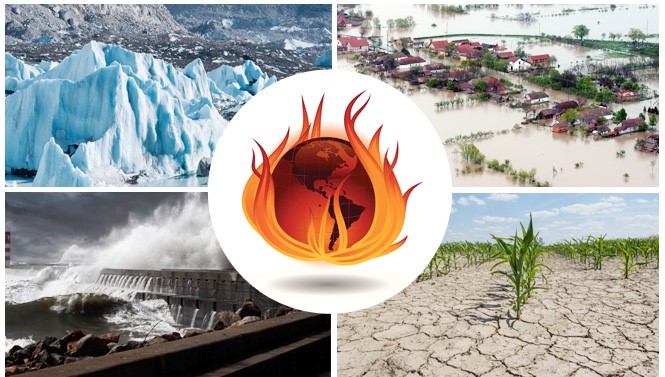Climatic Changes in India: December’s Rising and Falling Temperatures Across States
India’s diverse geography often leads to varying climatic conditions across its regions, particularly during December. With global warming becoming a pressing issue, the patterns of temperature fluctuations in different states provide a snapshot of these environmental shifts.
This blog explores the rising and falling temperatures across India in December, shedding light on the reasons for climate change, its causes, and its effects.
The Dynamics of Winter in India
December marks the onset of winter in most parts of India. Traditionally, northern regions experience cold and sometimes frosty conditions, while the southern parts remain relatively warmer due to their proximity to the equator.
However, recent years have witnessed unusual temperature patterns, likely influenced by global warming and climatic changes.

Temperature Trends in Key States
- Northern India: Unusual Warmth Amid Chilly Winds
Northern states like Jammu and Kashmir, Himachal Pradesh, Uttarakhand, and Delhi usually face harsh winters, with temperatures often dropping below freezing in higher altitudes. However, recent Decembers have seen occasional warm spells. For example:
- Jammu and Kashmir: While temperatures in regions like Gulmarg hover around -5°C to -10°C, lower altitudes are experiencing slightly warmer nights.
- Delhi: Known for its foggy mornings and cold nights, Delhi has witnessed rising minimum temperatures, sometimes exceeding 10°C, deviating from its usual December average of around 7°C.
- Central India: Mild Winters Turn Warmer
States like Madhya Pradesh and Chhattisgarh traditionally enjoy mild winters. However, temperature rises of 1°C to 2°C above normal have been recorded in December, indicating a shift towards shorter winters.
- Western India: Contrasting Conditions
- Rajasthan: The desert state, known for its stark temperature differences, continues to see chilly nights, with temperatures in places like Mount Abu dropping to 2°C. However, daytime temperatures in cities like Jaipur occasionally touch 25°C, reflecting warming trends.
- Gujarat: Coastal Gujarat experiences milder winters, but December nights have become warmer over the years, often exceeding the average minimum temperature of 15°C.
- Eastern India: Cooler Days with Sporadic Warm Spells
States like West Bengal and Odisha are generally cooler in December. Yet, regions such as Kolkata have recorded maximum temperatures creeping up to 28°C, deviating from their typical winter pattern.
- Southern India: Warmer Winters Persist
The southern states, including Tamil Nadu, Kerala, Karnataka, and Andhra Pradesh, generally experience mild winters. However, December has seen rising temperatures in some areas:
- Tamil Nadu: Cities like Chennai have recorded December maximums reaching 30°C.
- Kerala: Coastal regions are witnessing unseasonably humid and warm conditions.
- Northeastern India: A Mixed Bag
Northeastern states like Assam, Meghalaya, and Arunachal Pradesh remain relatively cool but have seen subtle warming trends. Shillong, for example, now records nighttime temperatures of 7°C to 9°C, slightly higher than its historical averages.
Causes and Reasons for Climate Change
Several factors contribute to these rising and falling temperatures:
- Global Warming: Increasing greenhouse gas emissions have altered temperature patterns worldwide, including in India.
- Urban Heat Island Effect: Rapid urbanization in cities like Delhi and Kolkata intensifies local temperatures.
- Deforestation and Land Use Changes: Reduced forest cover affects the cooling effects typically experienced in winter.
- Human Activities: Industrial emissions, vehicular pollution, and unregulated energy usage are major contributors to climate change.
Effects of Climate Change and Global Warming
The changing climatic conditions in December impact India’s agriculture, health, and energy sectors:
- Agriculture: Warmer winters can affect the Rabi crop cycle, reducing yields.
- Health: Fluctuating temperatures increase respiratory illnesses and exacerbate conditions like asthma.
- Energy Demand: Warmer nights decrease heating demands but challenge the stability of power systems due to unpredictable usage patterns.
The Role of the Ministry of Environment and Forests
The Ministry of Environment and Forest and the Ministry of Forest and Climate Change are at the forefront of combating climate change in India. Their initiatives include:
- Promoting afforestation programs to restore forest cover.
- Implementing sustainable urban planning to counter urban heat islands.
- Driving public awareness campaigns about climate adaptation and sustainable practices.
- Advocating for renewable energy and eco-friendly technologies.
Adapting to Changing Winters
India needs proactive strategies to tackle these climatic changes:
- Afforestation Programs: Restoring green cover to mitigate warming effects.
- Sustainable Urban Planning: Implementing measures to counter urban heat islands.
- Public Awareness Campaigns: Educating communities about climate adaptation and sustainable practices.
Conclusion
The rising and falling temperatures in India during December serve as a reminder of the urgent need to address climate change. Understanding these patterns and their impacts will help policymakers and citizens alike in crafting strategies to mitigate adverse effects and preserve India’s diverse climate for future generations.